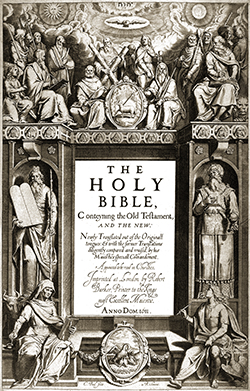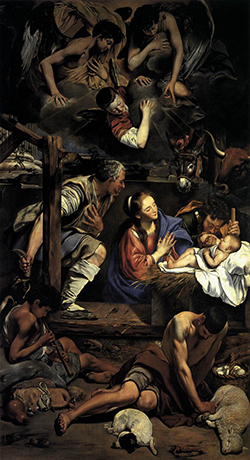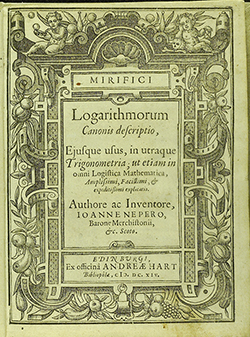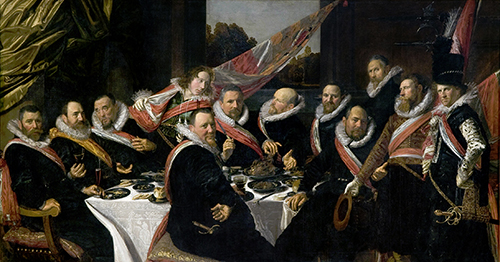MENU
The Electronic Scholarly Publishing Project: Providing access to classic scientific papers and other scholarly materials, since 1993. More About: ESP | OUR CONTENT | THIS WEBSITE | WHAT'S NEW | WHAT'S HOT
Comparative Timelines
The ESP Timeline (one of the site's most popular features) has been completely updated to allow the user to select (using the timeline controls above each column) different topics for the left and right sides of the display.
Select:
New Left Column
New Left Column
Dates
Decade
New Right Column
New Right Column
 Painting by Dong Qichang: River and Mountains on a Clear Autumn Day. Dong Qichang (1555–1636), high ranking court official, develops a pictorial scheme for landscape painting composed of limited, repeated component parts, strong and often tilted ground planes, and regulated brushstrokes that becomes high influential over the next two centuries of Chinese landscape painting. He propounded a view of history (inaccurate in many ways) that suggests a long tradition of lofty amateur artists of the elite class of court bureaucrats had favored his more calligraphic mode of painting practice, in contrast to small-minded professional painters who paid more attention to representational accuracy and detail. European influence in his work, via Jesuits at the Ming dynasty court, is possible. —JLS
Painting by Dong Qichang: River and Mountains on a Clear Autumn Day. Dong Qichang (1555–1636), high ranking court official, develops a pictorial scheme for landscape painting composed of limited, repeated component parts, strong and often tilted ground planes, and regulated brushstrokes that becomes high influential over the next two centuries of Chinese landscape painting. He propounded a view of history (inaccurate in many ways) that suggests a long tradition of lofty amateur artists of the elite class of court bureaucrats had favored his more calligraphic mode of painting practice, in contrast to small-minded professional painters who paid more attention to representational accuracy and detail. European influence in his work, via Jesuits at the Ming dynasty court, is possible. —JLS
 The Italian mathematician and physicist Galileo Galilei develops an astronomical telescope powerful enough to indentify moons orbiting Jupiter, sunspots on the Sun and the different phases of Venus, all of which are instrumental in convincing the scientific community of the day that the heliocentric Copernican model of the Solar System is superior to the geocentric Ptolemiac model.
The Italian mathematician and physicist Galileo Galilei develops an astronomical telescope powerful enough to indentify moons orbiting Jupiter, sunspots on the Sun and the different phases of Venus, all of which are instrumental in convincing the scientific community of the day that the heliocentric Copernican model of the Solar System is superior to the geocentric Ptolemiac model.
1610
(no entry for this year)
 King James Bible is first published. The KJV is an English translation of the Christian Bible for the Church of England begun in 1604 and completed in 1611. The books of the King James Version include the 39 books of the Old Testament, an intertestamental section containing 14 books of the Apocrypha (most of which correspond to books in the Vulgate Deuterocanon adhered to by Roman Catholics), and the 27 books of the New Testament. It was first printed by the King's Printer Robert Barker and was the third translation into English approved by the English Church authorities.
King James Bible is first published. The KJV is an English translation of the Christian Bible for the Church of England begun in 1604 and completed in 1611. The books of the King James Version include the 39 books of the Old Testament, an intertestamental section containing 14 books of the Apocrypha (most of which correspond to books in the Vulgate Deuterocanon adhered to by Roman Catholics), and the 27 books of the New Testament. It was first printed by the King's Printer Robert Barker and was the third translation into English approved by the English Church authorities.
1611
(no entry for this year)
The first commercial tobacco crop is raised in Jamestown, Virginia.
The first flintlock musket likely created for Louis XIII of France by gunsmith Marin Bourgeois.
1612
(no entry for this year)
Shakespeare's last play, Henry VIII, is published.
 Painting by Juan Bautista Maíno: The Adoration of the Shepherds
Painting by Juan Bautista Maíno: The Adoration of the Shepherds
Richard Braithwaite coined the phrase ‘computer’.
1613
(no entry for this year)
Tobacco shops open across Britain, selling the Virginia blend tobacco.
 Logarithms presented by John Napier in his book Mirifici Logarithmorum Canonis Descriptio (A Description of the Wonderful Law of Logarithms), which contained fifty-seven pages of explanatory matter and ninety pages of tables of numbers related to natural logarithms (see Napierian logarithm). The book also has an excellent discussion of theorems in spherical trigonometry, usually known as Napier's Rules of Circular Parts.
Logarithms presented by John Napier in his book Mirifici Logarithmorum Canonis Descriptio (A Description of the Wonderful Law of Logarithms), which contained fifty-seven pages of explanatory matter and ninety pages of tables of numbers related to natural logarithms (see Napierian logarithm). The book also has an excellent discussion of theorems in spherical trigonometry, usually known as Napier's Rules of Circular Parts.
1614
(no entry for this year)
(no entry for this year)
1615
(no entry for this year)
 Painting by Frans Hals: Banquet of the Officers of the St. George Civic Guard Company of Haarlem is considered one of the main attractions of the Frans Hals Museum. Hals was in his thirties when he painted this piece, and was far from established as a portrait painter. To be safe, he based most of his design on the painting of his predecessor, Cornelis Cornelisz van Haarlem, who painted the same militia company in 1599. Given a nearly impossible task, namely to complete his assignment but to add theatrical elements at the same time, Hals must have spent lots of time judging the politics of the group. He knew these men well as he served in the St. Joris militia himself from 1612-1615. In his painting, he indicates the political position of each man in the group as well as managing to give each a characteristic portrait. In Cornelis van Haarlem's piece the figures seem crammed into a tight space, and each face seems to have a similar expression. In Hals' group, an illusion of space and relaxed conversation is given. Officers were selected by the council of Haarlem to serve for three years, and this group had just finished their tenure and celebrated their end of service with a portrait. The man with the orange sash heads the table and the second in command is on his right. The three ensigns stand and the servant is carrying a plate.
Painting by Frans Hals: Banquet of the Officers of the St. George Civic Guard Company of Haarlem is considered one of the main attractions of the Frans Hals Museum. Hals was in his thirties when he painted this piece, and was far from established as a portrait painter. To be safe, he based most of his design on the painting of his predecessor, Cornelis Cornelisz van Haarlem, who painted the same militia company in 1599. Given a nearly impossible task, namely to complete his assignment but to add theatrical elements at the same time, Hals must have spent lots of time judging the politics of the group. He knew these men well as he served in the St. Joris militia himself from 1612-1615. In his painting, he indicates the political position of each man in the group as well as managing to give each a characteristic portrait. In Cornelis van Haarlem's piece the figures seem crammed into a tight space, and each face seems to have a similar expression. In Hals' group, an illusion of space and relaxed conversation is given. Officers were selected by the council of Haarlem to serve for three years, and this group had just finished their tenure and celebrated their end of service with a portrait. The man with the orange sash heads the table and the second in command is on his right. The three ensigns stand and the servant is carrying a plate.
Death of retired Shogun Tokugawa Ieyasu.
Fabio Colonna publishes "Dissertation on Tongue Stones" arguing that "nobody is so stupid" that he or she will not agree that tongue stones are really shark teeth. Like Rondelet several decades earlier, he attracts little attention.
Italian philosopher Lucilio Vanini suggests that humans descended from apes. In 1618 Vanini is arrested and, after a prolonged trial, condemned to have his tongue cut out, to be strangled at the stake and to have his body burned to ashes. The sentence was executed on 9 February 1619.
1616
(no entry for this year)
 Nikko Tosho-gu Shrine, dedicated to Tokugawa Ieyasu, the founder of the Tokugawa shogunate, is built. Ieyasu is enshrined there, where his remains are also entombed. During the Edo period, the Tokugawa shogunate carried out stately processions from Edo to the Nikko Tosho-gu. The shrine's annual spring and autumn festivals reenact these occasions, and are known as processions of a thousand warriors. Five structures at Nikko Tosho-gu are categorized as National Treasures of Japan, and three more as Important Cultural Properties. The stable of the shrine's sacred horses bears a carving of the three wise monkeys, who hear, speak and see no evil, a traditional symbol in Chinese and Japanese culture.
Nikko Tosho-gu Shrine, dedicated to Tokugawa Ieyasu, the founder of the Tokugawa shogunate, is built. Ieyasu is enshrined there, where his remains are also entombed. During the Edo period, the Tokugawa shogunate carried out stately processions from Edo to the Nikko Tosho-gu. The shrine's annual spring and autumn festivals reenact these occasions, and are known as processions of a thousand warriors. Five structures at Nikko Tosho-gu are categorized as National Treasures of Japan, and three more as Important Cultural Properties. The stable of the shrine's sacred horses bears a carving of the three wise monkeys, who hear, speak and see no evil, a traditional symbol in Chinese and Japanese culture.
1617
(no entry for this year)
Beginning of the Thirty Years War..
The Manchus start invading China. Their conquest eventually topples the Ming Dynasty.
1618
(no entry for this year)
Twenty slaves in Virginia Africans brought to Jamestown are the first slaves imported into Britain's North American colonies. Like indentured servants, they were probably freed after a fixed period of service.
1619
(no entry for this year)
ESP Quick Facts
ESP Origins
In the early 1990's, Robert Robbins was a faculty member at Johns Hopkins, where he directed the informatics core of GDB — the human gene-mapping database of the international human genome project. To share papers with colleagues around the world, he set up a small paper-sharing section on his personal web page. This small project evolved into The Electronic Scholarly Publishing Project.
ESP Support
In 1995, Robbins became the VP/IT of the Fred Hutchinson Cancer Research Center in Seattle, WA. Soon after arriving in Seattle, Robbins secured funding, through the ELSI component of the US Human Genome Project, to create the original ESP.ORG web site, with the formal goal of providing free, world-wide access to the literature of classical genetics.
ESP Rationale
Although the methods of molecular biology can seem almost magical to the uninitiated, the original techniques of classical genetics are readily appreciated by one and all: cross individuals that differ in some inherited trait, collect all of the progeny, score their attributes, and propose mechanisms to explain the patterns of inheritance observed.
ESP Goal
In reading the early works of classical genetics, one is drawn, almost inexorably, into ever more complex models, until molecular explanations begin to seem both necessary and natural. At that point, the tools for understanding genome research are at hand. Assisting readers reach this point was the original goal of The Electronic Scholarly Publishing Project.
ESP Usage
Usage of the site grew rapidly and has remained high. Faculty began to use the site for their assigned readings. Other on-line publishers, ranging from The New York Times to Nature referenced ESP materials in their own publications. Nobel laureates (e.g., Joshua Lederberg) regularly used the site and even wrote to suggest changes and improvements.
ESP Content
When the site began, no journals were making their early content available in digital format. As a result, ESP was obliged to digitize classic literature before it could be made available. For many important papers — such as Mendel's original paper or the first genetic map — ESP had to produce entirely new typeset versions of the works, if they were to be available in a high-quality format.
ESP Help
Early support from the DOE component of the Human Genome Project was critically important for getting the ESP project on a firm foundation. Since that funding ended (nearly 20 years ago), the project has been operated as a purely volunteer effort. Anyone wishing to assist in these efforts should send an email to Robbins.
ESP Plans
With the development of methods for adding typeset side notes to PDF files, the ESP project now plans to add annotated versions of some classical papers to its holdings. We also plan to add new reference and pedagogical material. We have already started providing regularly updated, comprehensive bibliographies to the ESP.ORG site.
ESP Picks from Around the Web (updated 06 MAR 2017 )
Old Science

Weird Science

Treating Disease with Fecal Transplantation
Fossils of miniature humans (hobbits) discovered in Indonesia

Dinosaur tail, complete with feathers, found preserved in amber.
Astronomy

Mysterious fast radio burst (FRB) detected in the distant universe.